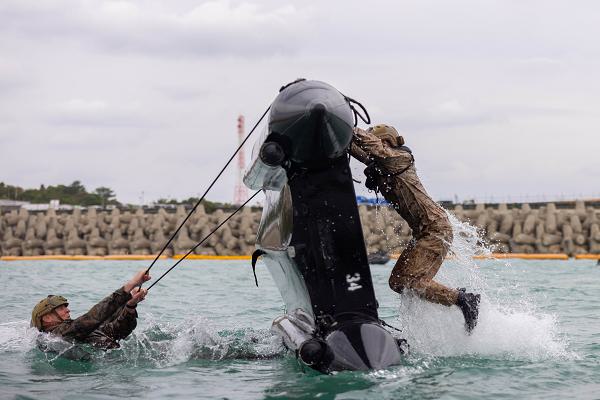
Okinawa, Japan. (January 23, 2025): If you have ever fallen out of a canoe, you can identify with these Marines as they practice flipping a raiding craft during small boat training (photo credit by Corporal Noah Masog). When it happens to civilians, it can be embarrassing. For Marines conducting a raid, getting a raft flipped back over quickly could mean the difference between life or death.
Officially called a “Combat Rubber Reconnaissance Craft” (CRRCs), the Marines refer to them as Zodiacs after their manufacturer. It is used to insert lightly armed raiding parties or reconnaissance teams onto beaches undetected. CRRCs are light weight, easily stowed, and can be inflated in minutes by foot pump. Their buoyancy allows up to ten troops to negotiate rough seas as they approach the beach. This is also when Marines find themselves flipped over into the surf struggling to right their vessel. Believe it or not, there is a whole lot of physics involved in flipping a raft.
The first principle is Newton’s Law of Motion which states that “for every action there is an equal and opposite reaction.” Simply trying to crawl back aboard will not work because there is no center of gravity and therefore no “leverage” to stabilize the craft. This is why the Zodiac has a dedicated “righting line” attached to the hull that can be pulled from outside the boat. At the same time, the occupants leverage their weight to create power to assist in the flip. This requires a coordinated effort by the crew, with some pushing against the water while others pull the righting line simultaneously.
Flipping a CRRC is a physically demanding skill that requires constant practice to ensure crews can quickly and safely recover should they capsize.


